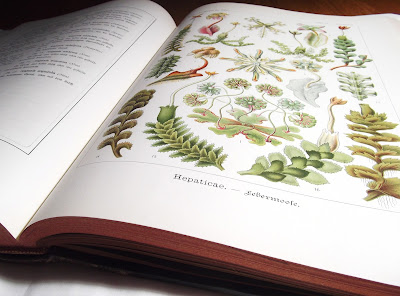Ernst
Haeckel (1834 — 1919) was an eminent German zoologist who specialized
in invertebrate anatomy. He named thousands of new species, mapped a
genealogical tree relating all life forms, and coined many now ubiquitous terms
in biology. A popularizer of Charles Darwin, Haeckel embraced evolution not only
as a scientific theory, but as a worldview. He outlined a new religion or philosophy
called monism, which
cast evolution as a cosmic force, a manifestation of the creative energy of
nature.
Haeckel’s chief interests lay in
evolution and life development processes in general, including the development
of nonrandom form, which culminated in the beautifully illustrated Kunstformen
der Natur - Art Forms of Nature,
a collection of 100 detailed, multi-colour illustrations (lithographic and autotype) of animals and sea creatures prints. Originally published in fascicules of ten between 1899 and 1904, and
as a complete volume in 1904.
The overriding themes of the Kunstformen
plates are symmetry and organization, central aspects of Haeckel's monism. The
subjects were selected to embody organization, from the scale patterns of
boxfishes to the spirals of ammonites to the perfect symmetries of jellies and
microorganisms, while images composing each plate are arranged for maximum
visual impact.
Kunstformen der Natur played a role in the development of early twentieth century art,
architecture, and design, bridging the gap between science and art. In
particular, many artists associated with the Art
Nouveau movement were influenced by Haeckel's images,
including René Binet, Karl Blossfeldt, Hans Christiansen, and Émile Gallé.
Our copy of Kunstformen der
Natur [photographed here] is a complete bound volume of all ten sets and sits
in our folio section. It was donated to us in 1919 by the first Director of
National Museum Wales [from 1909 to 1924], William Evans Hoyle. This
stemmed from Hoyle’s training as a medical anatomist and subsequent life long
interest in 'cephalopods'
Our BioSyB Department now holds Hoyle's cephalopod collection [over 400 of them] along with many other specimens and publications.
Hoyle biographical information:
All photographs in this post taken by the author.












No comments:
Post a Comment